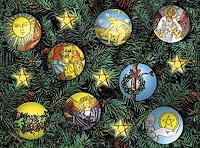By Jeanne Fiorini
My friend Patti once said something that has stayed in my mind as a profound piece of truth. Patti says a lot of things… many of them are amusing and are accentuated by the fact that her upstate New York accent converges with her tendency to speak her words a little sideways out of the corner of her mouth which makes her look like a sister of Dana Carvey’s “Church Lady”.
Patti was defending her comment about something long forgotten, something to which someone had taken offense. “Look,” she explained, sideways. “There are three ways to say something: you can make an observation, you can give an opinion, or you can make a judgment. In this case, I was expressing an opinion, so leave me alone about it.”
Allow me to demonstrate Patti’s three-tiered system of commentary by discussing my daughter’s thoughts on ice cream flavors. When asked how she feels about vanilla ice cream, Kate has been known to state that “Vanilla is stupid.”
This is a judgment about the intrinsic nature of vanilla. It categorically defines vanilla with no room for movement or, in this case, hope for redemption. “Stupid” is the final word on vanilla ice cream, as far as my Libran daughter is concerned.
If Kate were to have said something like “Vanilla is the color of Elmer’s Glue” or “It has brown specks in it” or “Vanilla makes my tongue feel funny”, then we’d be talking about observations. Observations are comments without an emotional charge, comments that are made with an objective and open mind. A person rarely gets their feelings hurt when someone makes a pure observation.
An opinion, on the other hand, contains some discrimination and discernment, and is a result of critical thinking. Feelings can get bruised when someone voices an opinion, especially when we need others to share an experience in the same way as ourselves.
In regards to the status of vanilla, statements such as “I don’t like vanilla” or “I’d prefer chocolate” or “Can we have pie instead?” reflect that consciousness has made some decisions as to the quality and relevance of the thing in question. An opinion conveys the notion that “Other people can do what they will, but here is where I stand on this issue.”
In the years of sitting with people at the Tarot table, I’ve heard many people be critical of themselves (or talk about how they’ve been criticized by others) for being “judgmental” when all they were doing was having an opinion. Women are especially vulnerable to the accusation of being judgmental and in truth seldom are, because that well-known desire to please and to be liked restrains the expression of such a strong stance.
As a Tarot reader (and as a friend), I’ve become clear in my intention to encourage people in their right to own an opinion. When you take away the right and responsibility to form thoughts and opinions, you end up with a culture of mice ruled by a culture of wolves. Observation and opinion are useful mechanisms by which to understand, discern, and relate meaningfully to the world. Speaking one’s mind about something does not necessarily imply an ultimate pronouncement of its worth.
Observations and opinions, then, need not become problematic; it’s in the having (and delivering) of judgments that we need to be careful. Whether a thing has been deemed hopelessly useless or undeniably holy, making a judgment places a defined value on something and sets it in stone. What’s judged is done; the die is cast, the lot is sealed. You’d better be darned sure when you make a judgment, and you’d better be careful about your aim, because placing judgment means that you cannot take it back.
I often use Patti’s words as support for people who are grappling with the understanding of their relationships with others and with their own thought processes. But only as I began to concretize my thoughts for this article did I realize how clearly these three levels of commentary (observation/ opinion/judgment) coincide with three ways of knowing from the Tarot: the High Priestess, the Justice, and the Judgment cards.
High Priestess/Observation
One could say that the High Priestess is the penultimate Observer. If she takes any action at all (and that is debatable) it would be to observe the situation. The High Priestess is the Queen of patience and trust in all things (eventually) finding their balance, and therefore has no need to render a decision or even a thought on any matter.
Justice/Opinion
Here we have the face of truth and fairness, the one who protects society from imbalance and irresponsibility. It is she who presides over the courthouse and promises that justice will prevail. She is the Egyptian goddess Maat who measures the weight of one’s soul against that of a feather and pronounces her verdict. Justice, sister to the High Priestess, is the one whose discerning mind defines right from wrong in a clear and impartial manner. Justice will render her opinion and consider it truth, subject to change only if and when further information comes forth.
Judgment/Judgment
The Judgment is one of the cards in the Tarot that people often misunderstand, confusing it with the Justice card in its decisiveness. There is decisiveness in the Judgment card no doubt, but there also is personal will, determination, and the power of right timing. Judgment is personal in a way that Justice cannot be. This card shows Judgment Day, when it’s time to meld what you know with what you’re willing to do, time to align what you desire and what the Universe seems to desire from (and for) you. When the forces come together as they do at the cross(roads) that we see in the Judgment card, there is no turning back.
Of course! Any “profound piece of truth” will surely find its counterpart in the Tarot! Each of these faces of knowing is powerful in their own right. Each is a carrier of wisdom and truth. It is the expression of the knowing and the use of their unique personalities that differentiates the three.
These are my observations and opinions; I welcome yours. And please try not to annoy Patti, she’s sure to tell you all about it.
© 2008 Jeanne Fiorini

